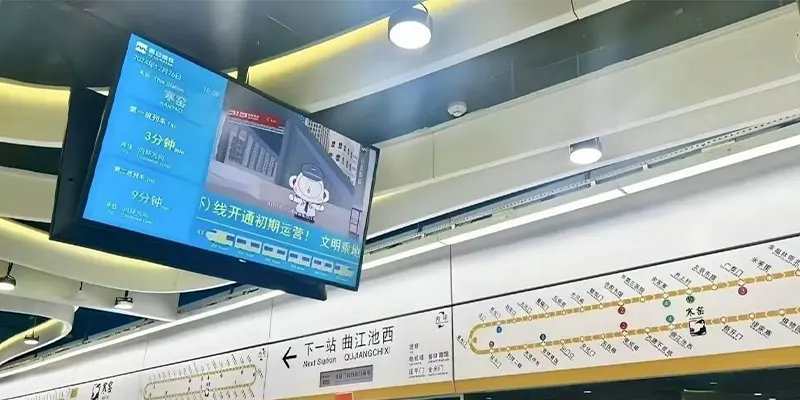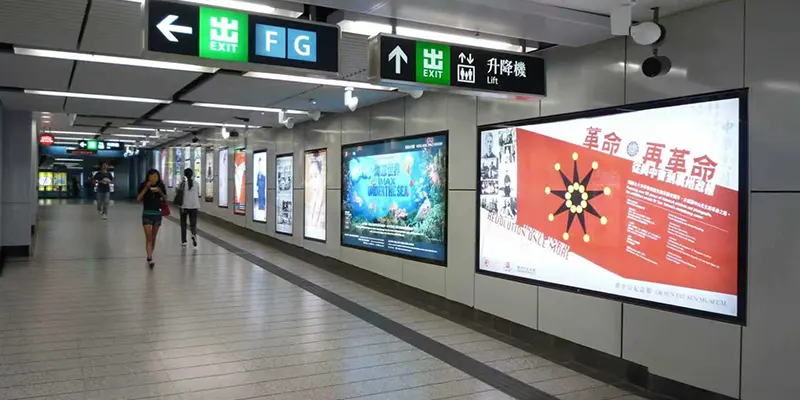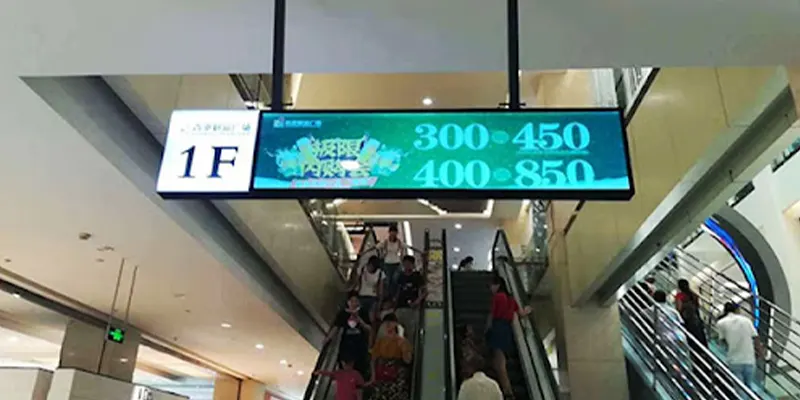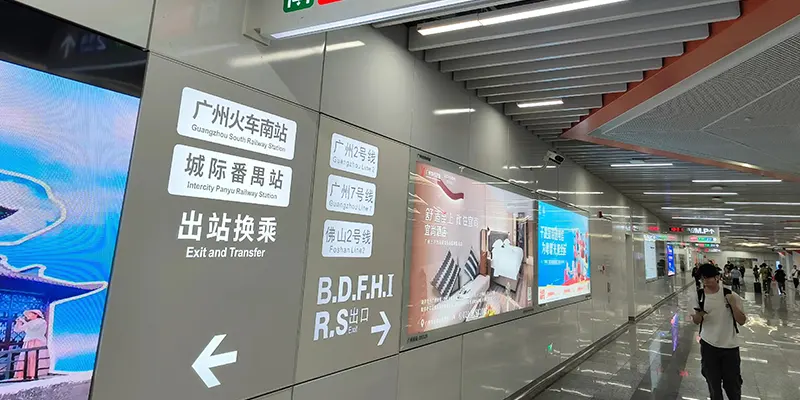How Display Digital Board Increased Foot Traffic for MetroLine Subway Stations
Digital displays have become the modern heartbeat of busy transportation hubs. Transit systems worldwide are shifting from traditional posters to dynamic digital boards. Why? Because commuters today expect real-time information, clarity, and convenience—all things digital boards deliver effortlessly.
What is MetroLine’s Challenge
MetroLine, a major subway operator, faced a worrying decline in station traffic.
Declining Foot Traffic Trends
More commuters were switching to ride-sharing apps or buses. Station congestion no longer translated into actual ridership.
Competition from Ride-Sharing and Buses
Apps like Uber, Lyft, and local bus networks became convenient alternatives.
Passenger Experience Issues
Outdated signage and poor wayfinding made MetroLine feel old-fashioned and difficult to navigate.
What Are Display Digital Boards?
Display digital boards are modern, screen-based communication tools designed to deliver dynamic, real-time information in high-traffic public environments. Unlike traditional static signage, these boards use LED, LCD, or interactive touch technology to present updated content instantly—making them highly effective in busy spaces like subway stations, airports, malls, and corporate lobbies.
Core Features and Functions
Display digital boards come equipped with advanced features such as:
Ø Real-time content updates, ensuring information is always accurate.
Ø High visibility and brightness control, allowing screens to perform well under various lighting conditions.
Ø Content automation, enabling schedules, ads, and alerts to change automatically based on time or commuter flow.
Ø Remote management, where staff can update multiple screens from a central dashboard.
Ø High-resolution visuals, improving readability and engagement.
Ø Multilingual display options, which are extremely helpful in diverse transit environments.
Types of Digital Boards Used in Subway Systems
LED Boards
LED displays provide bright, energy-efficient visuals that remain readable from long distances. They’re ideal for large station halls, entrances, and platforms where visibility is key.
LCD Signage
LCD digital boards deliver high-resolution graphics and videos, making them perfect for detailed content like maps, safety instructions, event promotions, and advertising campaigns.
Interactive Kiosks
Interactive kiosks allow commuters to engage directly with the screen—search for routes, buy tickets, view maps, and explore station amenities. These touch-enabled systems create a more personalized and intuitive commuter experience.
How Display Digital Board Increased Foot Traffic
Display digital boards played a major role in transforming the MetroLine subway stations from simple transit points into engaging, user-friendly hubs. The strategic use of digital screens not only improved communication but also reshaped how commuters interacted with the stations. This shift led to a measurable increase in foot traffic as more people began choosing MetroLine for convenience, clarity, and comfort.
Enhanced Commuter Experience
Digital boards created a smoother, stress-free travel environment. Commuters no longer had to guess platform changes or search for outdated posters. Instead, they received timely, accurate updates right when they needed them. This reliability encouraged people to use MetroLine more frequently, especially during peak hours when clarity is crucial.
Improved Station Navigation
Clear wayfinding boards helped passengers navigate complex stations without hesitation. When people can easily find exits, transfers, ticket counters, elevators, and retail shops, they’re more likely to stay longer and explore the station. smoother navigation reduces frustration and increases overall satisfaction—leading to higher repeat traffic.
Real-Time Information That Builds Trust
Trust is one of the biggest drivers of public transit usage. When digital boards show real-time train arrivals, delays, platform shifts, and emergency notifications, passengers feel confident that the system is transparent and dependable. This transparency encouraged more commuters to choose MetroLine over ride-share alternatives.
Creating a Modern, Welcoming Station Atmosphere
The introduction of digital boards made MetroLine feel modern, clean, and technologically advanced. This enhanced environment appealed especially to younger commuters, tourists, and professionals. A more inviting atmosphere naturally encourages more people to choose the subway as their preferred travel method.Conclusion
Digital display boards transformed MetroLine’s stations into smarter, more engaging, and more efficient environments. By improving communication, enhancing navigation, and providing dynamic content, MetroLine successfully increased foot traffic and improved the commuter experience. This shift didn’t just solve a problem—it reshaped the future of public transit.
FAQs
1. How did digital boards help increase MetroLine’s foot traffic?
By providing real-time train updates, clear wayfinding, and engaging content, digital boards improved the overall commuter experience. Passengers felt more confident and comfortable, leading to higher repeat visits and attracting new riders.
2. Are digital boards expensive to maintain?
Yes. Digital boards allow dynamic, eye-catching advertisements that can be updated instantly. This higher visibility and flexibility help advertisers reach the right audience at the right time, boosting engagement and ROI.
3. Do digital boards benefit advertisers?
Absolutely. Real-time schedules, platform changes, and clear directions help commuters navigate stations efficiently. Interactive kiosks also provide maps and ticketing support, ensuring even first-time riders can travel without stress.
4. Will MetroLine expand digital boards to more locations?
Given the success of the current implementation, MetroLine plans to extend digital boards to additional stations. Future expansion will likely include more interactive kiosks, AI-driven personalization, and dynamic advertising to further enhance the commuter experience and maximize foot traffic growth.





